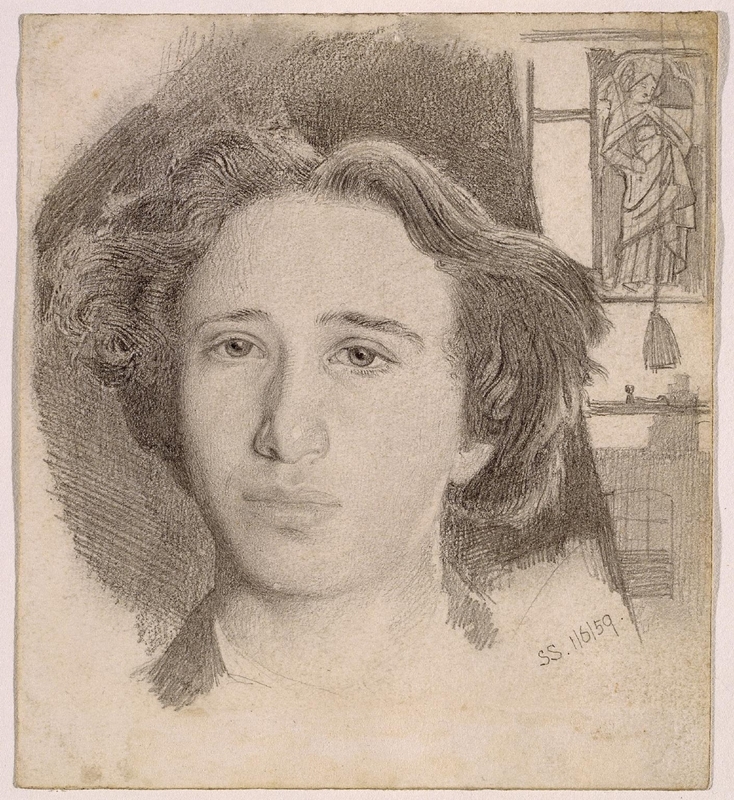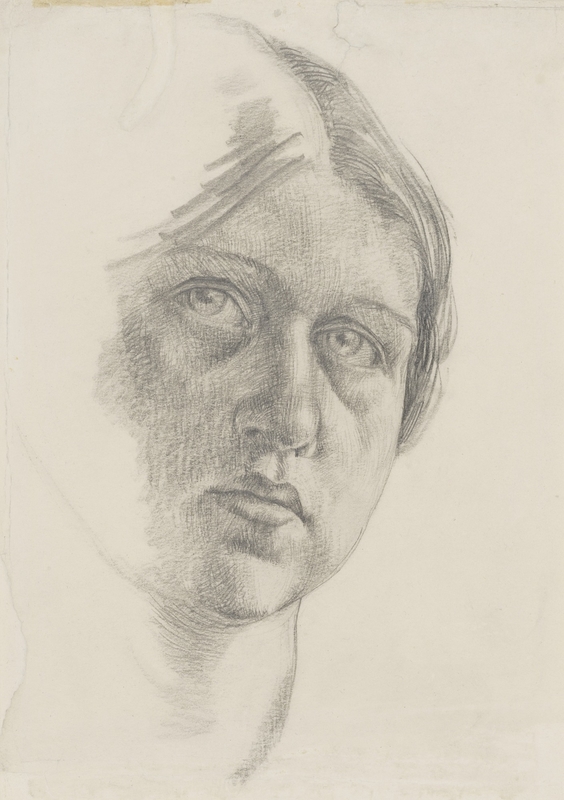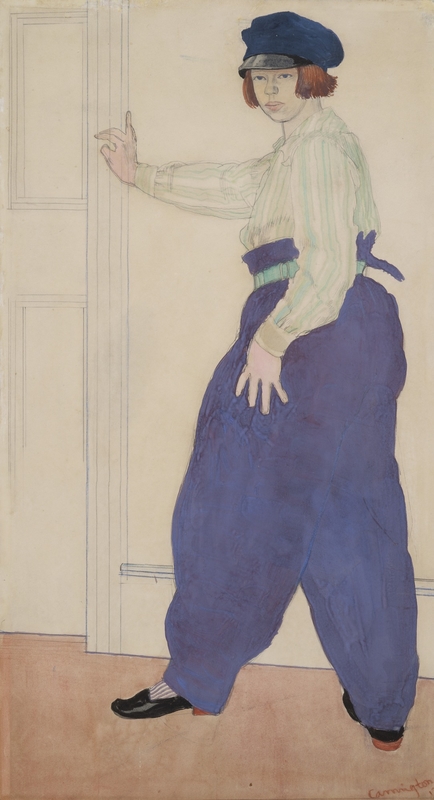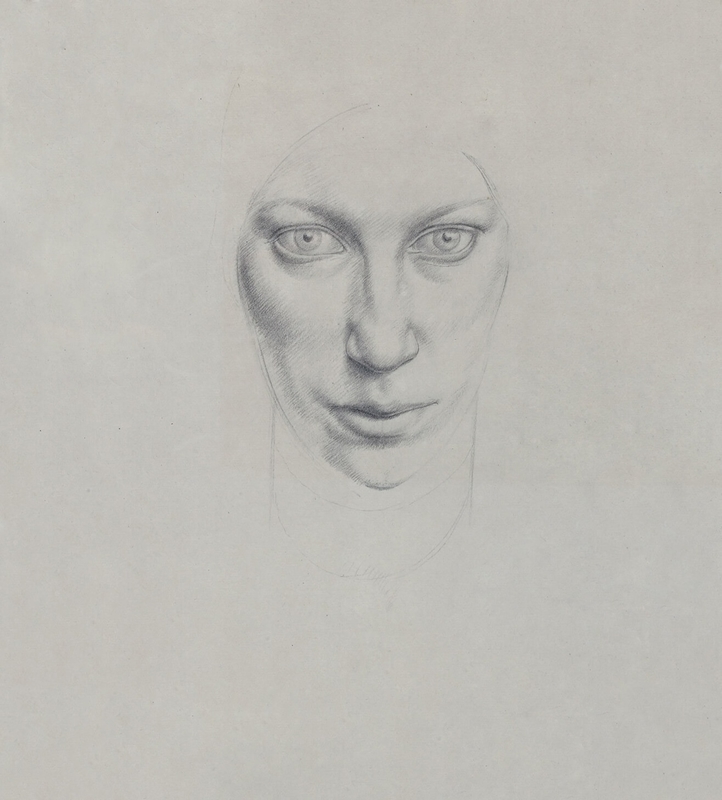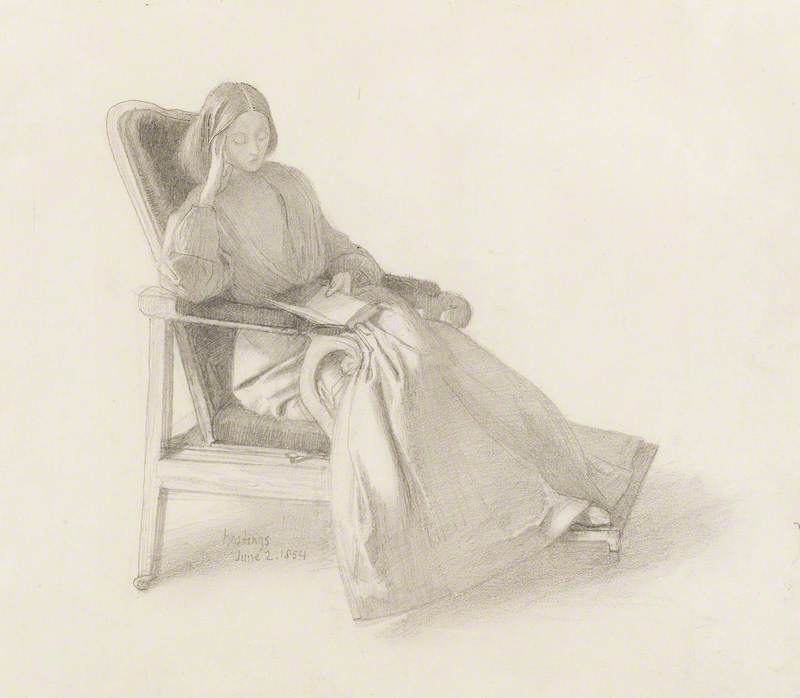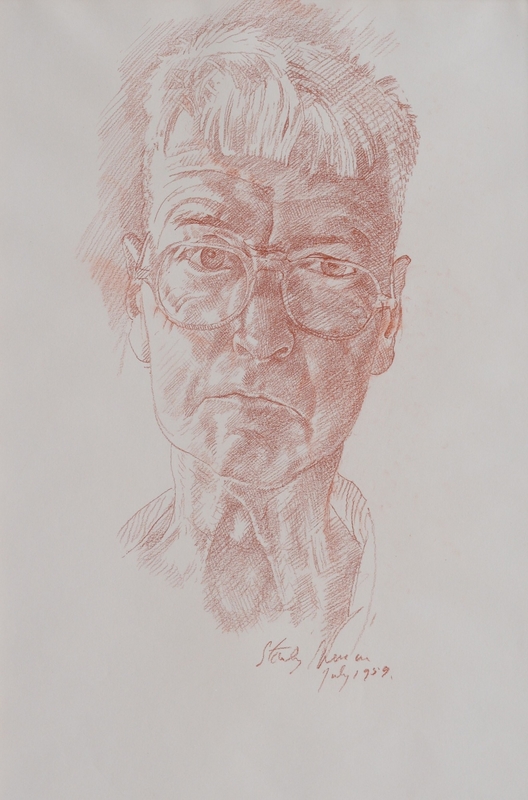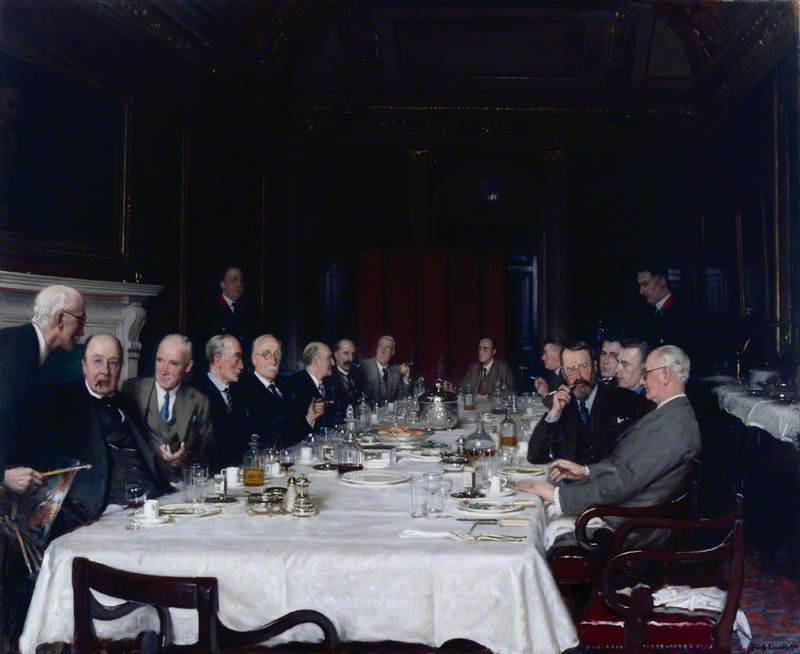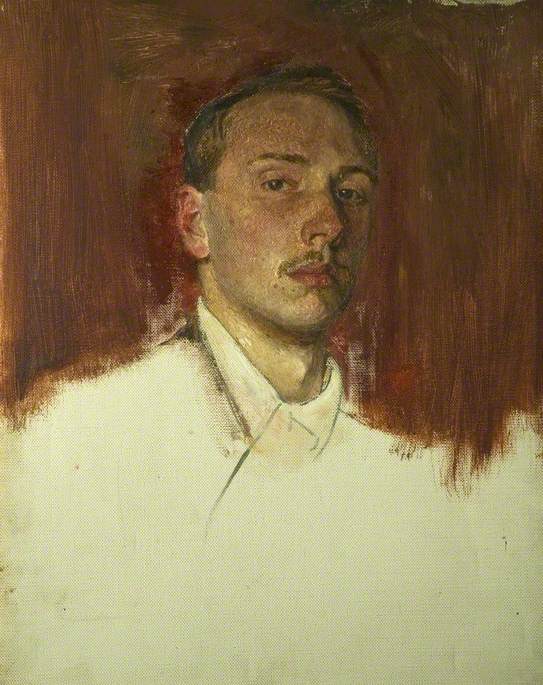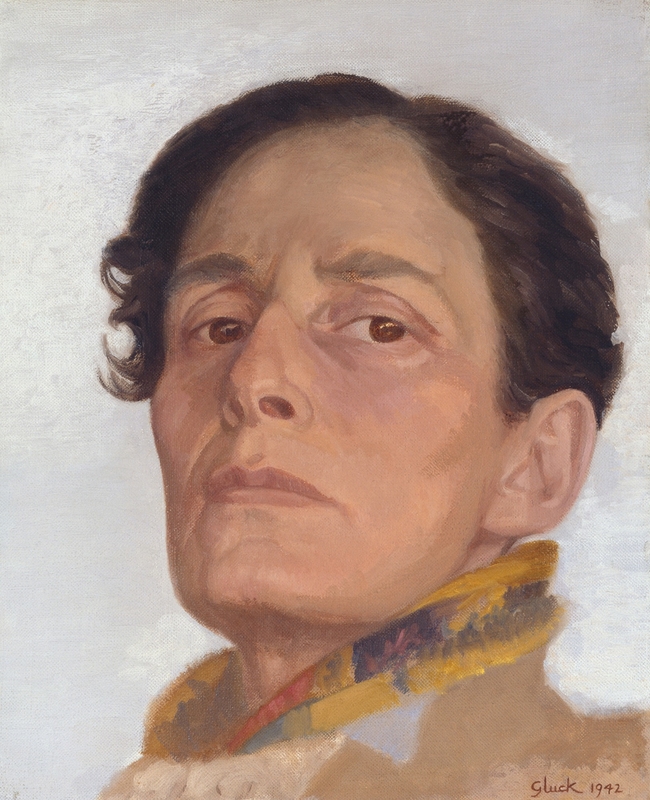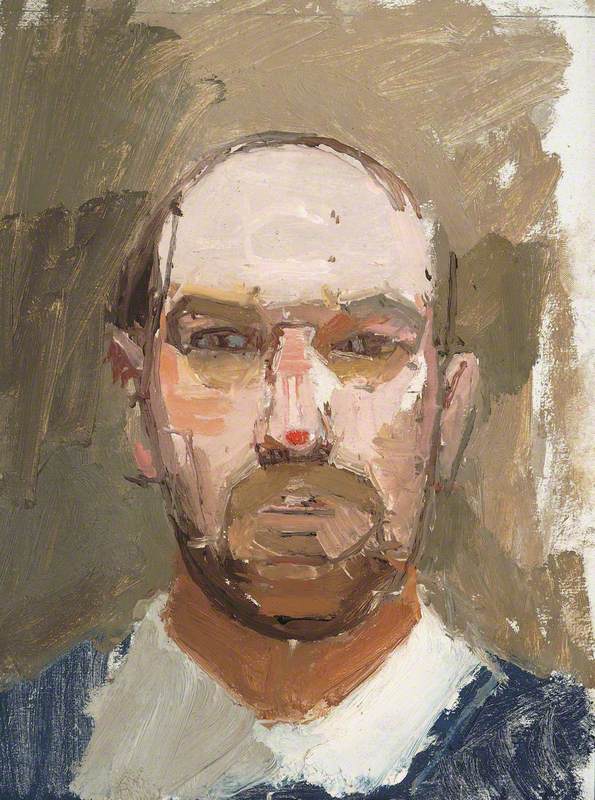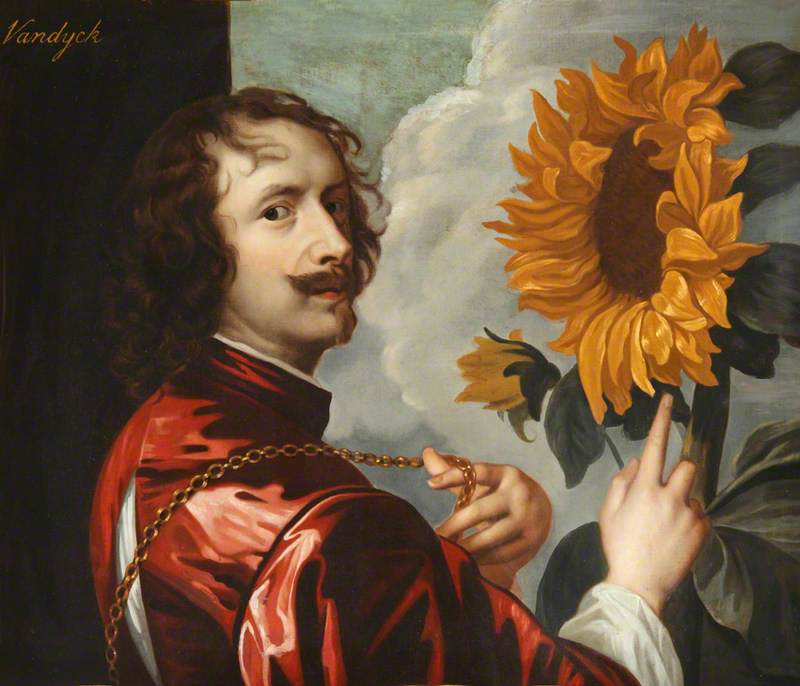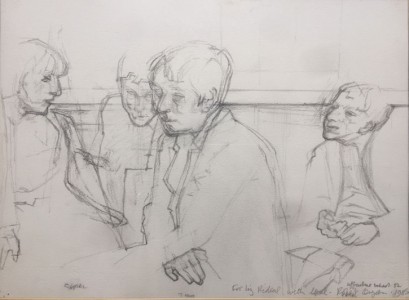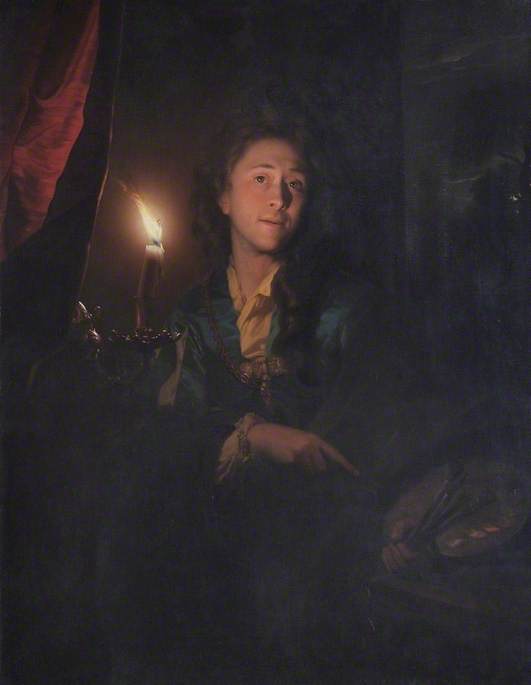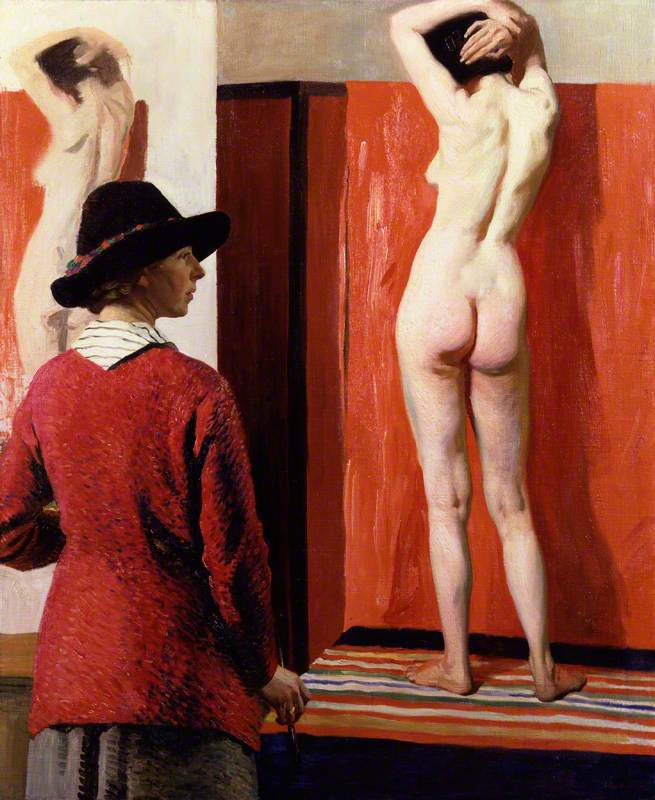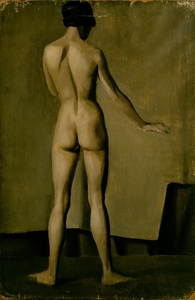A drawn self-portrait gives the impression of the utmost simplicity. The artist picks up the most readily available tools to depict the most readily available model. Drawing is associated with authenticity due to its history as a medium for preparatory studies for a more 'finished' artwork, particularly a painting.
Inspired by Italian Renaissance workshops, drawing from life underpinned artistic training across Europe for centuries until educational reform in the 1960s. From Leonardo da Vinci (1452–1519) to Leonardo DiCaprio in Titanic (1997), a sketchbook has long been deemed an artist's essential companion.
As a result, drawing possesses an attractive immediacy as the embodied, ongoing practice of an artist at work. This sense of intimacy gives conviction to self-portraiture as a statement of how an artist sees themselves and how they want others to see them. Such drawings become what Deanna Petherbridge described as 'meditations on vision, as well as constructions of identity' in The Primacy of Drawing (2010).
Self-portraiture as a genre has a complex history, increasing exponentially from the Renaissance as more artists began to be praised as singular geniuses. Art historian Frances Borzello wrote that self-portraiture is 'part of a language painters use to make a point, from the simple "this is what I look like" to the more complicated "this is what I believe in".'
Pre-Raphaelite artist Simeon Solomon's Self Portrait (1859) combines these assertions through his romantic self-depiction, with a soft-focus gaze and the delicately drawn textures of his hair and eyebrows.
In the background is a window with a stained-glass detail, perhaps of a biblical or Old Testament figure, the subjects that made Solomon's name. Beyond the pane is the shape of another house's chimney, suggesting that Solomon is not in a church but up in his studio. The artist's domain becomes its own sacred space. It is a realm that seems still in the process of materialising, seen in the unfinished edges of the curtain and Solomon's collar.
There is a biographical poignancy to this with hindsight, for Solomon's career would end prematurely when he was arrested and imprisoned for his homosexuality in 1873. After his release, Solomon kept making art but ended his days in a workhouse.
Drawings can also demonstrate the evolution of an artist's self-perception. Two works by Dora Carrington (1893–1932) from 1910 and 1913 show her self-presentation shift after she attended the Slade School of Art in London. The first self-portrait is meticulously drawn, sensitive and wary. Only the thick pencil strokes Carrington uses to sketch the hair on the left reveal impatience with the long locks she would soon shear off, along with her first name, to embrace a playful androgyny.
Three years later, the 'crophead', as Virginia Woolf called her, appears full length in pencil and watercolour. Her hand on the doorframe of a room, Carrington turns towards the viewer in a striped shirt and patent shoes, a sharp bob and cap framing her face. What really draws the eye are her billowing blue trousers held up by a belt, a daring sartorial choice for the time.
Carrington's attire may have been a costume for one of the many parties she attended. In her vibrant letters, she would make quick sketches of herself dressed as a boy or a Cossack soldier. Despite Carrington's confident stance, the translucency of her right hand hints at her profound ambivalence towards her own physicality.
In later life, she would seldom exhibit or even sign her artwork. It seems appropriate, then, that the rare Carrington self-portrait manifests through less formal and traditionally exalted media like drawing, woodcutting and private letter-writing.
Like Carrington, Winifred Knights (1899–1947) was a prize-winning student at the Slade and became the first woman Scholar in Decorative Painting at the British School of Rome in 1920.
The Slade had been popular with women students since its opening in 1871 because it allowed them to draw from the female nude and the partially draped male nude.
Due to the constraining politics of feminine respectability, this was a right their counterparts at London's Royal Academy (established in 1768 with two women as founding members) would not win until 1893. The legacy of this disbarment, in addition to the general expectation that they would give up art for domesticity once married, meant that women struggled to prove their professional status as artists on an equal footing with men.
Knights painted slowly and finished very few paintings in her career, meaning that most of her work consisted of drawings and studies from life. These working methods demonstrate the Slade curriculum's emphasis on expert draughtsmanship. Professor Henry Tonks (1862–1937), also a surgeon and anatomist, extolled the superiority of the classical tradition over post-impressionism and modernist experimentation.
This arresting, frontal self-portrait was made in 1920, the year that Knights won her prestigious scholarship. Aware of her glamour, Knights was intentional in her self-fashioning, designing her own clothes and wearing her hair in a sleek middle parting in imitation of a Renaissance donna. Although her facial features are the focus, this distinctive style is evoked by the shape of her hairline. Many of Knights' drawings are self-portraits, which she integrated into her paintings alongside family, friends and lovers.
Taken together, Knights' drawn self-portraits echo the numerous images that Dante Gabriel Rossetti (1828–1882) made of his muse and eventual wife Elizabeth Siddal (1829–1862) in the Victorian era. Siddal became an artist herself, receiving tutelage from Rossetti and the support of John Ruskin (1819–1900), but she is remembered primarily through the gaze of others. Rossetti drew Siddal obsessively in various poses: working at an easel, reading, or simply at rest. She is often turned away or with averted, sometimes closed, eyes.
Knights' early art drew on Pre-Raphaelite inspirations. An illustration of Christina Rossetti's poem Goblin Market (1862) won her a commercial poster competition in 1913. Similarly to Siddal, Knights was often drawn, sculpted and painted by other artists who knew her, mostly men. The direct gaze of her large, hooded eyes in her own drawing is strikingly different to the milder beauty of many of those portraits. In the twentieth century, at least in her early career, Knights was able to utilise her access to institutional education and validation to take control of her artistic persona, unlike Siddal.
Stanley Spencer (1891–1959) was another Slade-educated artist who created self-portraits across his lifetime, both drawn and painted. Through repetition, the self-portrait becomes a rumination on time and mortality, traced across the works of artists like Rembrandt (1606–1669) and Käthe Kollwitz (1867–1945). Spencer made his last known drawn self-portrait in 1959, using a dressing table mirror and red conté crayon. It might be a study for his last painting of himself, also made in the final year of his life. Spencer's crayon examines every crease of his face in searching detail, the choice of warm red harking back to the drawings of Renaissance exemplars like Leonardo and Raphael (1483–1520).
In Charlotte Brontë's Jane Eyre (1847), the famously 'plain' protagonist makes two portraits: a self-portrait drawn in chalk and a painted miniature of the beautiful Blanche Ingram, rival for the love of her employer Mr Rochester. The first takes her two hours while the second occupies almost a fortnight. For Jane, drawing with crayons is unvarnished truthfulness, an instruction to remember her inferiority to Blanche's polish. Yet, as Jane will discover, Mr Rochester loves her alone. Just as Jane's supposed plainness is belied by her heart and soul, drawings have a special intensity and uniqueness that render the drawn self as compelling as any other work of art.
Iona Glen, gallery worker and writer
This content was funded by the Bridget Riley Art Foundation
Further reading
Frances Borzello, Seeing Ourselves: Women's Self Portraits, Thames & Hudson, 2016
Hugo Chapman & Marzia Faietti (eds.), Fra Angelico to Leonardo: Italian Renaissance Drawings, British Museum Press, 2010
Anne Chisholm (ed.), Carrington's Letters, Vintage, 2019
James Hall, The Self-Portrait: A Cultural History, Thames & Hudson, 2014
Sacha Llewellyn, Winifred Knights, Lund Humphries 2016
Deanna Petherbridge, The Primacy of Drawing, Yale University Press, 2010

